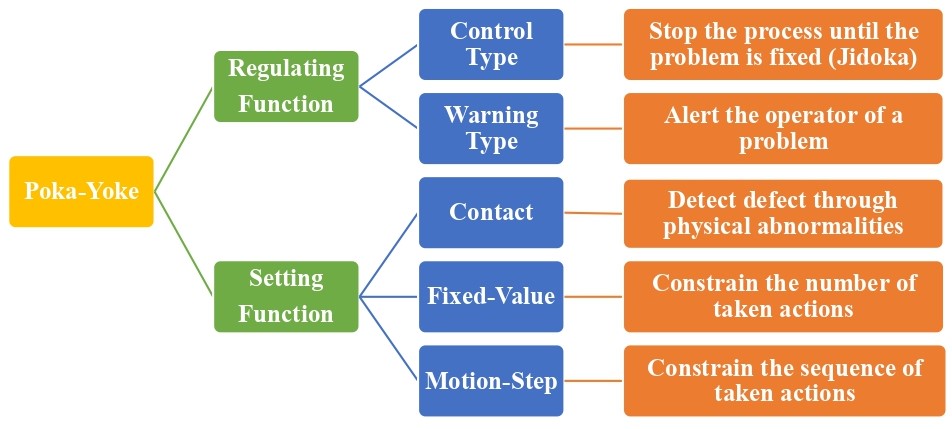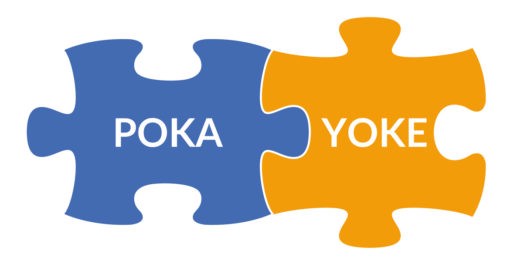Lean manufacturing makes use of various lean tools for improvement in production effectiveness and efficiency. The main goal of such an approach is to get the maximum output by making use of less time, less effort and fewer resources, that is, to create a Lean process. Continual improvement is an important part of every operation and the same can be achieved by applying the lean tools. Some of the commonly used Lean tools in manufacturing are as follows:
- Kaizen
- Poka-Yoke
- Jidoka
- Gemba
- Kanban
- Single Minute Exchange of Die (SMED)
- Total Productive Maintenance (TPM)
- Overall Equipment Effectiveness (OEE)
In continuation our series, this article discuss about Poka-Yoke in detail:
POKA-YOKE
Poka-Yoke is a Japanese term meaning ‘mistake proofing’. It is a controlling mechanism used for avoiding mistakes. It eliminates product defects by alerting the operator when a defect occurs thus preventing the errors. Poka-Yoke relieves cognitive loading on people making inspections (Muri), reduces the need for post-inspection tasks (Mura) and reduces defects (Muda). Poka-Yoke method can be described as follows:

An example of Poka-yoke is the outlet present in sinks which prevents overflow in case the tap is left open or when the drain gets blocked. Another example is a dialysis machine which uses air bubble as detectors so that air bubbles does not pass to the body of the patient. For an effective and efficient Poka-Yoke, the following must be followed:
- 100% inspection of all the parts of the process
- 100% success rate in detecting all the defects by the sensitivity of the device
- The device cost should be less than the defect cost
The main aim of Poka-Yoke is to reduce the need of over thinking for a process. When the process is followed in the wrong way, then it will stop functioning making it clear to the operator about the defect. It helps to get the work right at the first time leading to improved and reliable products to be manufactured. Poka-Yoke is a prevention technique which prevents a problem to occur which helps in cutting down the error cost leading to more profit for the organization.

.png
)
